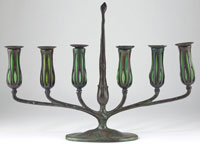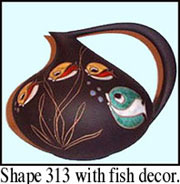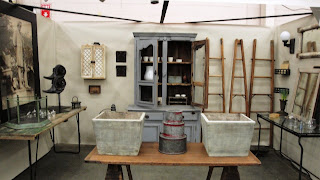
Important French Parcel Gilt and Gem Set Jewel Casket, with the mark for Paul Rigaux and Pierre Leblanc (est. $20,000-$40,000)
Over 700 lots of fine art, decorative arts, and fine wine will be offered at LLAES Ltd.’s Two-Day Fall Catalogue Auction. Fine Wine to be sold Friday, September 16th at 6PM, Fine & Decorative Arts to be sold Saturday, September 17th at 9AM. This event will be held at the firm’s state of the art gallery in Hillsborough, NC.
Leland Little Auction & Estate Sales, Ltd. is proud to announce their Two-Day Fall Catalogue Auction. The fine offerings at this sale will feature property deaccessioned from the Museum of Early Southern Decorative Arts, the North Carolina Museum of History, the New Bern Historical Society, as well as other select estates and collections. Floor, absentee, and telephone bidding will be available both days, as well as live online bidding through Live Auctioneers.
Of special note, LLAES, Ltd. is under current construction to expand their gallery space by 5500 square feet, bringing the total square footage to 15,500 square feet. This expansion will offer 2000 square feet of additional gallery space, a state of the art walk in wine cooler, and ample storage for consignors. LLAES, Ltd. expects the construction to be completed by December of 2011.
The first session on Friday evening will offer 107 lots of fine wine and will be led by a magnum bottle of La Tache, vintage 2005 (est. $6,000-$8,000). This sale will also feature vintage 1996 Petrus, one bottle (est. $1,200 -$1,500), vintage 1959 Chateau d’Yquem, one bottle (est. $1,000-$1,500), as well as vintage 1985 Chateau Margaux, four bottles (est. $800-$1,100). To discuss buying or selling fine wines contact Mark Solomon, Fine Wine Director, at mark@llauctions.com.
Starting at 9AM on Saturday morning, over 600 lots of Fine and Decorative Arts will be offered. This session will start off

Southern Federal Inlaid Serpentine Sideboard, circa 1800, eastern North Carolina (est. $10,000-$15,000)
with an outstanding Confederate and Militaria collection. A rare Mendenhall, Jones & Gardner Confederate Rifle, made in Guilford County, North Carolina (est. $12,000-$16,000) should generate excitement. Other lots of note include a McElroy Confederate Foot Officer’s Sword (est. $9,000-$12,000), a Confederate North Carolina Contract Forage Cap, circa 1860-62 ($4,000-$6,000), and an Identified Rhode Island Civil War Gillmore Medal (est. $3,500 – $4,500), which was awarded “For Gallant and Meritorious Conduct” at Fort Sumter.
Fine Silver will be strong, as usual, led by an Important French Parcel Gilt & Gem Set Jewel Casket with the mark for Paul Rigaux and Pierre Leblanc (est. $20,000-$40,000). Other top lots include a Tiffany & Co. Japanese Style Sterling Bowl (est. $1,000-$2,000) and a Swedish Silver Tea Urn by Gustaf Mollenborg (est. $4,000-$6,000).
Over seventy lots of Fine American Art will energize the sale throughout the day. Top lots include a series of four bas relief sculptures of calla lilies by Donald Sultan (est. $8,000-$12,000), an oil on canvas by Francis Flanagan, entitled, “Monhegan Island, Maine” (est. $4,000-$6,000), and an oil on canvas by Lendall Pitts entitled, “Source of Romanche” (est. $3,000-$6,000). An unusually fine offering of contemporary American art and photography will also generate excitement, led by an untitled lithograph by Richard Diebenkorn (est. $4,000-$6,000) and a screen print on paper, pencil signed on the lower left by Andy Warhol (est. $2,000-$4,000).

Bronze Bird Fountain with remnants of gilding by Janet Scudders (est. $15,000-$25,000)
Sculpture will be well represented at this auction, led by a bronze bird fountain with remnants of gilding by Janet Scudder (est. $15,000-$25,000). This sculpture bears a foundry mark reading “GORHAM Co. Foundeurs,” and was included in a 1919 exhibition of 22 garden sculptures organized by W. Frank Purdy, president of the Art Alliance in New York City. Other fine offerings include a bronze fluid abstract modernist sculpture by Oded Halahmy (est. $500-$1,000) and a 19th century carved wood with gesso and polychrome paint statue of Our Lady of Guadelupe (est. $1,000-$2,000).
American Furniture offerings are extremely strong and provide an outstanding sampling ranging from 18th century to modern forms. Top lots include a Southern Federal Inlaid Serpentine Sideboard, circa 1800 (est. $10,000-$15,000), a North Carolina Paint Decorated Blanket Chest, attributed to Alamance County, the first half of the 19th century (est. $5,000-$10,000), a circa 1810 New York Federal Linen Press (est. $4,000-$8,000), an American Classical Secretary Bookcase, circa 1820-1840 (est. $4,000-$6,000), a North Carolina Country Sheraton Sideboard attributed to Guilford County, early 19th century (est. $2,000-$4,000), and a Philadelphia Chippendale Arm Chair, second half of the 18th century, attributed to William Savery (est. $1,000-$2,000).

Amethyst, Turquoise, Diamond, and Pearl Vintage Choker Necklace, consisting of one round amethyst weighing approximately 44 carats (est. $4,500-$6,500)
The Jewelry Department at LLAES, Ltd. has again brought a fine collection of estate jewelry and watches to market, led by an Amethyst, Turquoise, Diamond, and Pearl Choker consisting of one round amethyst weighing approximately 44 carats (est. $4,500-$6,500). Other lots of note include a Platinum and Three Stone Diamond Ring (est. $3,500-$5,500), an Antique Red Coral Bracelet (est. $600-$800), and an 18KT Diamond and Emerald Link Bracelet (est. $1,000-$3,000).
Decorative Accessories, led by a Tiffany Studios collection including a Tiffany Blown Glass and Bronze Candelabrum (est. $4,000-$8,000) and a Tiffany Studios

Tiffany Blown Glass and Bronze Candelabrum, signed Tiffany Studios New York 10088 with Tiffany Studios Monogram (est. $4,000-$8,000)
16 Piece “Grapevine” Desk Set (est. $4,0000-$8,000), will be a highlight of the sale. Other exciting lots include an Alamance County Redware Plate, circa 1800 (est. $2,000-$4,000), a Navajo Germantown Blanket (est. $2,000-$4,000), and a Fine Ormolu and Cut Glass Chandelier, 19th century (est. $2,000 – $4,000).
LLAES, Ltd. continues to bring fresh Asian Art offerings to market. Lots of note include a Chinese Millefleur Bottle Vase, 20th century (est. $1,000-$2,000), a Large Chinese Famille Jaune Porcelain Vase, 19th century (est. $1,000-$2,000), and a Large Chinese Scholar’s Brush Pot, likely 18th century (est. $600-$900).
Leland Little Auction & Estate Sales, Ltd.’s Two-Day Winter Catalogue Auction will be held on December 2nd and 3rd, 2011. LLAES, Ltd. is always seeking quality consignments, whether it be an entire estate or a significant item. If you would like to discuss selling please call at 919-644-1243 or email at info@LLAuctions.com. To learn more about Leland Little Auction & Estate Sales, Ltd. please visit their website at www.LLAUCTIONS.com.

















